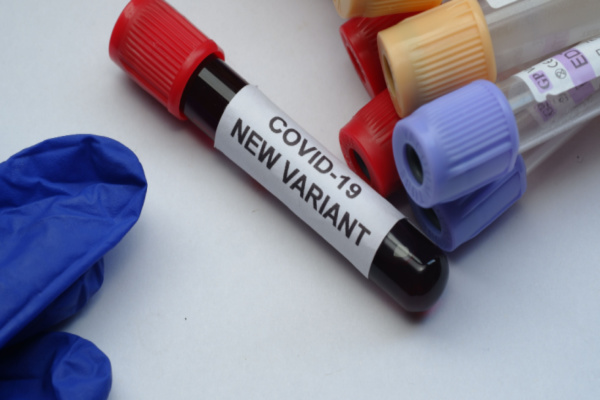Just in time for the holiday season, on Friday, the Centers for Disease Control and Prevention (CDC) revealed that it is now tracking a new COVID-19 “variant of concern” around the U.S. known as XBB, which has grown to make up an estimated 3.1% of new infections nationwide.
According to CBS News, the new strain’s prevalence has grown furthest so far in the Northeast, according to the agency’s weekly estimates. More than 5% of infections in the regions spanning New Jersey through Maine are linked to XBB, in this week’s “Nowcast” from the CDC. XBB is behind a vast swath of infections across some South Asian countries and has made up an increasing share of reported virus sequences from around the world and in arriving international travelers.
Earlier this month, the CDC offered preliminary estimates suggesting XBB is potentially doubling in proportion about every 12 days. That could be faster than the current pace of the BQ.1 and BQ.1.1 variants now dominant across the country.
On the bright side, the Biden administration’s top COVID officials and experts say they do not think XBB will pose a new threat on the scale of when the Omicron variant first emerged a year ago. “Where we’ve seen surges, they’ve seen mostly it be driven by seasonality, people coming inside, spending more time around one another, but not being specifically being driven by the emergence of a new variant,” the CDC’s Ian Williams told a meeting of the CDC’s emergency response and preparedness advisers earlier this month.
XBB is one of several new lineages that have displaced BA.4 and BA.5, the Omicron variant siblings that had driven a wave of cases over the summer. As of this week, the CDC says BA.5 has fallen to less than 1 in 5 new infections nationwide and BA.4 has now virtually disappeared. The strain’s arrival also comes at a time when most regions, including the Northeast, are seeing relatively flat or slowing COVID-19 hospitalization rates.
Around 3 in 4 Americans currently live in counties deemed at “low” COVID-19 Community Levels, the lowest tier of precautions recommended by the agency, according to figures released Friday by the agency. “However, there’s a lot of worry that a new variant could emerge and start us all over again. So there’s a lot of work focusing on making sure we’re prepared and thinking about that and watching if it emerges around the world, so we can become prepared,” Williams added.
First named by scientists back in September, XBB is believed to be a “recombinant” of two different Omicron subvariants – BA.2.10.1 and BA.2.75 – that emerged earlier this year. It is the latest in a now-dominant crowd of strains carrying mutations that could evade key COVID antibody drugs. “There has been a rapid rise in XBB, but it doesn’t look like it’s particularly more severe than other variants,” Derek Smith, director of the Center for Pathogen Evolution at the University of Cambridge, told CBS News in an interview late last month.
Smith helps lead the National Institutes of Health’s effort to detect and analyze variants early as they emerge, as part of an “Avengers-Like” program that spans multiple American federal agencies and outside experts. “XBB, it got our attention and then was prioritized, even though it was small numbers, because it had quite a number of substitutions different from the currently circulating viruses in the [receptor-binding domain], which meant that it might be an escape variant,” Smith said.
The NIH effort’s scientists early on began ordering supplies to manufacture mock-ups of XBB to test how it might escape immunity in the laboratory compared to other strains. Data also now suggests the new COVID boosters will offer at least some improved protection against the strain.
A study released by Pfizer and BioNTech earlier this month, which was posted as a preprint and has yet to be peer reviewed, found their updated COVID booster looks to be effective at triggering better antibody responses against an XBB strain.
However, the company’s scientists also said it was among the variants that saw the worst neutralization from their shot. “It doesn’t fall off the map, but it goes down. So, you could expect some protection, but not the optimal protection,” Dr. Anthony Fauci, the president’s chief medical adviser, said Wednesday at a White House briefing.
—
Photo Credit: wisely / Shutterstock.com
